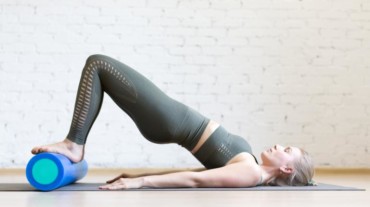[ad_1]
There’s no denying the immense satisfaction that comes after a rewarding workout. Whether you hit the gym, go for a run or engage in any other physical activity, exercise is essential to maintain a healthy lifestyle. However, sometimes the post-workout high can be dampened by pesky muscle cramps. These involuntary contractions of muscles can be painful and uncomfortable, but fear not! We have compiled a list of effective strategies to help you get rid of those muscle cramps and continue enjoying your fitness journey.
Muscle cramps or muscle spasms occur when a muscle involuntarily contracts and doesn’t relax properly. The primary cause of muscle cramps is often attributed to muscle fatigue or overuse, especially during intense physical activity or exercise. Dehydration can also play a significant role in triggering muscle cramps, as inadequate fluid intake can lead to an electrolyte imbalance and disrupt muscle function. Additionally, inadequate stretching before physical activity, poor circulation, and certain medical conditions such as nerve compression or mineral deficiencies (potassium, calcium, magnesium), can cause muscle cramps.
Also read: Muscle cramps ruining your sex life? 5 tips to deal with it
How to get rid of muscle cramps after working out
1. Stretching before and after exercise
One of the most crucial preventive measures against muscle cramps is proper stretching. Always warm up before your workout with dynamic stretches and perform static stretches after your workout. Focus on the muscles you’ve used the most during your exercise routine. Stretching helps improve flexibility, enhances blood circulation, and reduces the risk of muscle cramps.
2. Stay Hydrated
Dehydration is a leading cause of muscle cramps after exercise. Make sure you stay adequately hydrated before, during, and after your workout. A 2013 study published by the PubMed Central states that drinking enough water helps maintain the balance of electrolytes in your body, preventing cramps caused by imbalances in minerals like sodium, potassium, calcium, and magnesium.
3. Replenish Electrolytes
During intense workouts, you lose essential electrolytes through sweat. To replenish these crucial minerals, consider consuming electrolyte-rich drinks or natural sources like coconut water. Alternatively, you can consume foods high in electrolytes, such as bananas (potassium), leafy greens (magnesium), and oranges (calcium).
4. Massage and Foam Rolling
Gently massaging the affected muscles can help relieve muscle cramps. You can use your hands or a foam roller to apply pressure to the cramped area. This promotes blood flow and relaxation of the muscle, reducing the intensity of the cramp.

5. Apply Hot or Cold Packs
Both heat and cold therapies can be beneficial for alleviating muscle cramps, depending on personal preference. Applying a warm compress or taking a warm bath can relax the muscles and relieve tension. On the other hand, a cold pack or ice wrapped in a cloth can help reduce inflammation and soothe the cramped area.
6. Gentle Movement
Although it may be tempting to stay still when experiencing muscle cramps, gentle movement can often help. Try to perform light stretches or low-impact exercises to encourage blood flow to the affected muscles. Avoid high-intensity workouts until the cramp subsides.
7. Analgesic Creams or Pain Relievers
Over-the-counter analgesic creams containing ingredients such as menthol or camphor can provide temporary relief from muscle cramps. Additionally, you may opt for pain relievers like ibuprofen or acetaminophen, but remember to consult a healthcare professional before using any medication.
8. Post-workout Nutrition
Ensure that you consume a well-balanced meal after your workout, including a good mix of proteins, carbohydrates, and healthy fats. Proper nutrition aids in muscle recovery and reduces the likelihood of cramps.

9. Regular Exercise
Ironically, exercising regularly can help prevent muscle cramps in the long run. As your muscles get accustomed to physical activity, they become less prone to cramping. Consistent exercise also improves blood circulation and overall muscle health.
If you experience frequent or severe muscle cramps, it’s essential to consult a healthcare professional to rule out any underlying medical conditions. So, keep moving, stay hydrated, and embrace a healthy lifestyle for a cramp-free exercise experience!
[ad_2]
Source link

